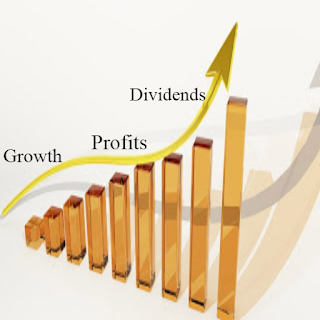So, here are some of the important points which will help you to determine if the stock dividend is sustainable and will grow over time:
1. Dividend Yield
Investors can actually do better by investing in above-average dividend yield stocks with the potential for significant dividend growth over time or stocks that have a long history of boosting dividends each year. Although such companies don’t declare large increases, when dividend payments are hiked regularly the yield on your original investment or cost (YOC) can climb dramatically over time. Generally, it is advisable that one should look for stocks that have at minimum of 2% dividend yield.
2. Dividend Payout Ratio
Dividend Payout provides us the percentage of earnings that is paid out to shareholders as dividends. The payout ratio is also a good indicator for growth stocks. A higher payout ratio indicates an implicit admission by management that future growth prospects are limited& if it shows quick growth, it means that company has plowed back its earnings. Sometimes the management has to cut the dividends or raise debt to pay the dividends, both of which are bad for future earnings and dividend growth.It is generally suggested to look for companies whose payout ratio is between 20% – 50% as it allows the company to retain the rest of the earnings for further reuse – in acquisitions, capital investments or to retire debt as well as have sufficient rooms for further dividend increases.
3. Dividend Coverage Ratio
This important ratio tells us how safe the dividend is based on the free cash flow generated by the company. Free Cash Flow (FCF) is the cash that is left over after the company has made the necessary investments back into the business or is the amount of cash that can be taken out of the business without impairing future results.Dividend Coverage Ratio is calculated by dividing the Free Cash Flow per share by dividend per share. A ratio less than 1 suggests that dividend cut is likely to happen as the company is burning cash rather than it is bringing in. A ratio of 2 or higher indicated that the company is in a better position to pay the dividends

4. Quick Ratio
The Quick Ratio indicates whether the company has enough liquidity to pay for its dividends at the current level. It is calculated by the amount of liquid current assets by current liabilities. Liquid assets are those assets that can be converted into cash quickly and it excludes inventory and other current assets that are not liquid.
Therefore, a higher ratio indicates a more liquid current position.
5. Short-Term Debt Coverage Ratio
Short-term debt coverage ratio is used to determine if the company has the ability to successfully service its short-term debt obligations by using the cash generated from operations which are calculated by dividing the income from operations (from cash flow statement) by current liabilities or short-term debt (from the balance sheet).A ratio of 2 or more indicates that dividend is secure and that there is enough cash to offset any liquidity concerns raised by calculating the quick ratio. Hope this article will help you to easily research the dividend stocks as a well-researched dividend stock can be held on for long periods of time providing a continuous stream of inflation-adjusted income.



Leave a comment